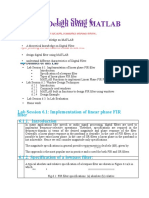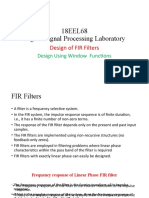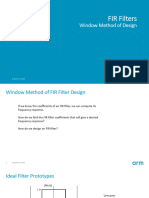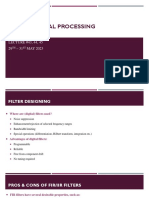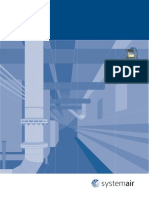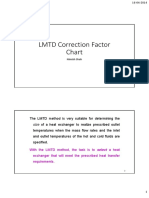0% found this document useful (0 votes)
18 views34 pages7 FIR Filter
The document discusses the design of FIR filters using the windowing method, detailing the four basic types of linear phase FIR filters and their impulse responses. It outlines the steps for designing FIR filters, including determining specifications, selecting window functions, and computing impulse responses. Additionally, it provides examples of lowpass, highpass, and bandpass filter designs, along with the use of adjustable Kaiser windows.
Uploaded by
khanhnt.22bi13212Copyright
© © All Rights Reserved
We take content rights seriously. If you suspect this is your content, claim it here.
Available Formats
Download as PDF, TXT or read online on Scribd
0% found this document useful (0 votes)
18 views34 pages7 FIR Filter
The document discusses the design of FIR filters using the windowing method, detailing the four basic types of linear phase FIR filters and their impulse responses. It outlines the steps for designing FIR filters, including determining specifications, selecting window functions, and computing impulse responses. Additionally, it provides examples of lowpass, highpass, and bandpass filter designs, along with the use of adjustable Kaiser windows.
Uploaded by
khanhnt.22bi13212Copyright
© © All Rights Reserved
We take content rights seriously. If you suspect this is your content, claim it here.
Available Formats
Download as PDF, TXT or read online on Scribd
/ 34








